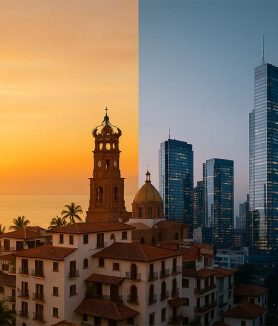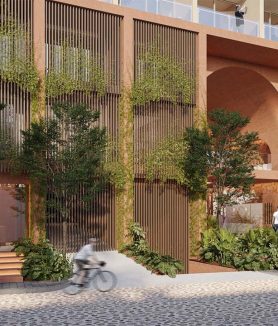It has been almost three years since the covid-19 pandemic began and it brought with it endless changes in multiple areas that touch all areas of our lives, such as architecture, travel, economy, business, health, among many others.
Another big change was the transformation of the work paradigm. Before the pandemic, most of the world worked fixed hours and in an office, but this has changed since we had to confine, and companies were forced to continue their operations from home. This allowed millions of people to decide where they wanted to work from and this is how this term “digital nomads” gained strength.
Digital nomad refers to the person who has the possibility of carrying out their work 100% remotely and decides to do it from attractive cities, with a lot of cultural activity, good weather, a wide range of services and where rents are cheaper and purchasing power of foreigners is much higher, that is, their money is worth more.
 An example of these attractive cities where digital nomads have chosen to reside is Mexico City, particularly in the Condesa and Roma neighborhoods. The local government took note of the economic benefits and created incentives to attract more of them, but the consequence has been the discontent of the locals because, although there is a great economic benefit, the phenomenon of gentrification begins to wreak havoc, negatively impacting in the life of the local people.
An example of these attractive cities where digital nomads have chosen to reside is Mexico City, particularly in the Condesa and Roma neighborhoods. The local government took note of the economic benefits and created incentives to attract more of them, but the consequence has been the discontent of the locals because, although there is a great economic benefit, the phenomenon of gentrification begins to wreak havoc, negatively impacting in the life of the local people.
But what is gentrification? The Universidad de América Foundation defines it as an urban phenomenon in which a neighborhood, due to certain circumstances, acquires greater added value, which causes it to become attractive for a sector of citizens, with a higher purchasing power, to look at it, “which encourages the development of new real estate projects, which begin to modernize the environment.”
 Consequently, the price of rents rises, the buildings are inhabited by more people from other socioeconomic segments and, therefore, the urban physiognomy is completely transformed. In other words, the people originally living in the area begin to leave because they can no longer sustain their standard of living.
Consequently, the price of rents rises, the buildings are inhabited by more people from other socioeconomic segments and, therefore, the urban physiognomy is completely transformed. In other words, the people originally living in the area begin to leave because they can no longer sustain their standard of living.
But despite the modernized and commercial effect with the arrival of digital nomads in Mexico City and especially in La Roma and La Condesa, the excessive increase in rents and services has ended up displacing local residents to neighboring areas because it is impossible to compete with the purchasing power of foreigners in nominal terms.
As an example, the average price of renting a two-bedroom apartment is 22,314 pesos, data from Vivanuncios indicates, while millennials have a monthly salary of 9,329 pesos, according to BBVA.
This same phenomenon is occurring in parallel, although to a lesser extent, in other cities in the country, such as Guadalajara, Puerto Vallarta and Tulum, where despite the modernization of services, the opening of shops and spaces for entertainment, the purchasing power of locals is declining in comparative terms.
What do you think about digital nomads and gentrification?












